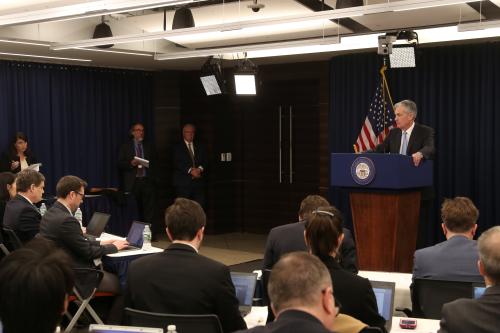Abstract
The increase in job vacancies over the last two years has not been accompanied by a decline in unemployment. When this has happened in the past it has coincided with an increase in the NAIRU. Despite some qualifications as to why it might not be appropriate to view the recent increase as indicating such a shift, I use updated data to estimate the model developed in my 2009 paper that links movements in the Beveridge curve (the trade-off between job vacancies and unemployment) and the NAIRU. That exercise suggests that the NAIRU has risen from about 5% before the most recent recession to 5.8% in the first quarter of 2011.
I then consider possible explanations for this outward shift including the persistence of high rates of long-term unemployment, extended unemployment benefits, a mismatch of skills between the unemployed and available jobs, and geographic mismatch exacerbated by problems in the housing market. I find little evidence to support the view that an increase in the level of long-term unemployment in the U.S. will lead to an increase in the NAIRU, but no strong evidence against the hypothesis either. A review of the evidence on the impact of extended unemployment benefits suggests that they probably have played a significant role in increasing the NAIRU, and the best estimates could explain the entire increase. Analysis of data on unemployment rates and vacancy rates by industry suggest that it is unlikely that skills mismatch has played an important role in the increase in the NAIRU. Similar evidence on geographic mismatch also calls that explanation into question. A number of recent papers have examined the extent to which problems in the housing market may be responsible for very low labor mobility that might be causing geographic mismatch. Most of the evidence suggests that this is not currently a problem though it is possible it could become more of a problem when the economy begins to pick-up.
I conclude that while the NAIRU has probably increased, that is unlikely to be an important consideration for monetary or fiscal policy for some time. I also comment on the role that aggregate demand management and monetary policy could play in reducing some of the problems that might be causing the increase in the NAIRU.
Introduction
Starting with Blanchard and Summers (1987) it has been observed that there is a tendency for unemployment to remain high in some countries after a recession. In a series of papers, Lawrence Ball (1997, 1999, 2009a&b) has suggested that in most OECD countries the NAIRU increases after each recession. An exception, at least in the past, has been the United States. Here the unemployment rate has returned to levels that prevailed before recessions except during the period of rising unemployment in the 1970s.
Ball has suggested that the reason for U.S. exceptionalism in this matter is the aggressive counter cyclical policy that the Federal Reserve has pursued to fulfill its dual mandate of stable prices and full employment. Ball also points to several cases where countries other than the U.S. successfully lowered high unemployment rates with aggressive monetary policy at the expense of small increases in inflation.
Ball has proposed several explanations for this phenomenon, but here I focus on those that relate to the efficiency of the labor market matching function. In particular, Ball argues that the long-term unemployed may put less downward pressure on wages than those unemployed for a shorter period either because their search intensity decreases or because they are viewed as less able by employers.
Below I argue that there is already evidence of a decrease in the efficiency of matching in the U.S. and that this has led to a moderate increase in the NAIRU. I will review a range of evidence on the hypothesis that prolonged periods of high long-term unemployment lead to an increase in the NAIRU and conclude that there is no strong evidence for this mechanism, but that the conjecture that it is at least a partial cause of the decline in labor market efficiency cannot be dismissed.
Having not found a complete and convincing explanation for the decline in efficiency I turn to several other possible explanations to see what they might contribute. Extended unemployment benefits likely explain a significant part of the change and possibly the entire change. I argue that structural mismatch of the skills of the unemployed and the skill demands of available jobs probably has not contributed importantly to the growth of unemployment. Evidence on geographic mismatch does not suggest a role for it either, though it is possible that housing market problems could prevent labor mobility and increase the NAIRU in the future. I conclude with a discussion of the policy implications of the findings.



